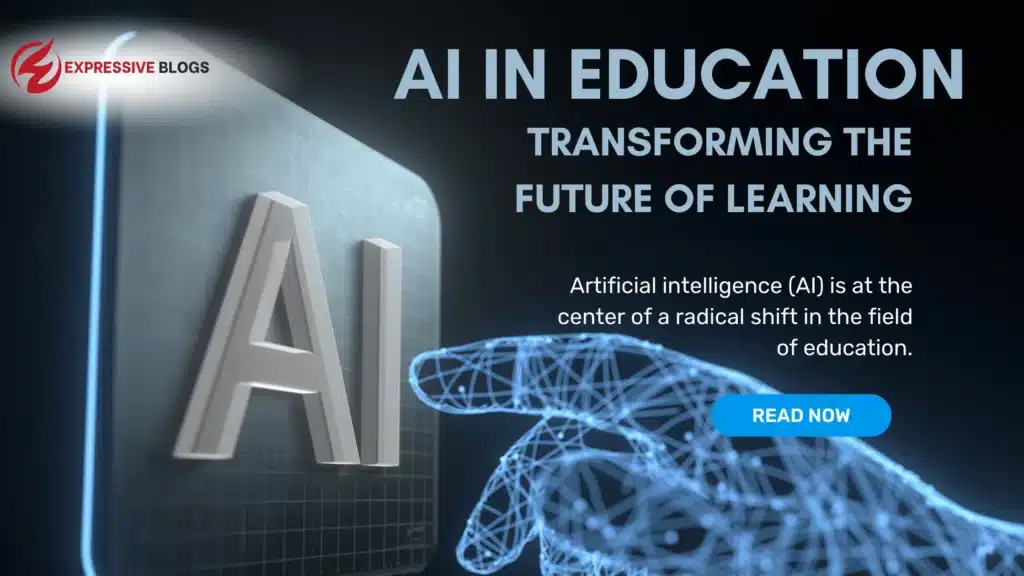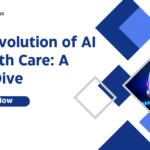Artificial intelligence (AI) is at the center of a radical shift in education. AI technologies are more than just a catchphrase, they are actively influencing how we interact with knowledge, teach, and learn. Artificial intelligence (AI) can transform the educational environment, from individualized learning experiences to simplifying administrative duties. First, we must know what artificial intelligence is in education and how it alters our approach to learning? In this blog, we will discuss the role of (artificial intelligence) ai in education, as well as its advantages, disadvantages, and potential applications for both students and teachers in the future.
What is ai in education?
Artificial intelligence (AI) in education is a utilization of ai technology to improve and customize the educational experience. This includes technologies for developing more intelligent educational experiences, such as data analytics, machine learning, and natural language processing. The ultimate goal is to help teachers and students to attain better results by improving the way knowledge is obtained, evaluated, and delivered.
How ai is transforming education
1. Personalized learning
Personalized learning is one of the most fantastic uses of ai in education. Ai can evaluate the student’s strengths and weaknesses, make adjustments to content to suit their specific needs, and analyze data from their interactions with the learning platform. This implies that, regardless of whether they have more assistance or difficult content, students get a learning experience that is created to their speed and learning preference. There are some examples of AI-powered tutoring systems such as Duolingo is special for language learning or Socratic by Google use algorithms is special for to access a student’s progress and adapt the lessons accordingly.
2. Automated administrative tasks
AI is also helping educators save valuable time by automating their routine administrative tasks. From grading assignments to scheduling meetings, AI tools are also capable of handling repeated tasks. It also allows teachers to focus more on teaching and interacting with students easily. There is also a tool called Gradescope, which uses AI to grade papers and assignments faster and more consistently.
3. Smart content creation
Ai can help in the development of dynamic educational materials. Platforms that have ai capabilities, for instance, can create interactive exercises, assignments, and quizzes that are suited to a student’s needs or the curriculum. This reduces the need for teachers to spend time producing resources from scratch and gives them rapid access to high-quality materials. There is a tool called Scibesense which uses ai to automate the creation of customized worksheets and lesson plans.
4. Improve Student Engagement
Ai can improve student engagement by incorporating interactive tools, gamified learning experiences, and real-time feedback mechanisms. These tools help to increase student engagement and motivate them to keep participating. There is a tool called class craft which is used to turn learning into an interactive adventure, where students can earn rewards and progress through challenges.
5. Data-Driven Insights
Ai technologies can calculate vast amounts of educational data to uncover patterns and provide valuable insights into student performance, engagement, and behavior. This helps teachers as they can use this data to make more informed decisions about their teaching methods and identify those students who may need additional support. There is a learning management systems (LMS) like Canvas and Moodle which use ai to generate detailed reports on students’ performance. This also helps educators to identify trends and make data-driven decisions.
also read:Top ai courses in pakistan: Level Up Your Skills
Benefits of ai in education
Personalized learnings
Ai is adopting lessons and resources to meet students’ individual needs, and ensuring that each student progresses at their own pace.
Efficiency and time-saving
Ai fully automates administrative tasks like grading and scheduling, giving teachers more time and efficiency to focus on teaching and student interactions.
Accessibility
AI tools can help students with impairments overcome the gap by providing tailored resources such as speech-to-text software, language translation tools, and personalized tutoring.
Data-driven decisions
Ai is allowing teachers to make informed decisions based on real-time data about student performance, and it leads to more effective teaching strategies.
Engagement and motivation
Ai-powered interactive and gamified learning environments can make education more enjoyable and engaging. Which will keep the students engaged.
Conclusion
The integration of ai in education presents a unique opportunity to redefine the learning experience. Ai can empower teachers and students by automating repetitive tasks, creating individualized learning paths, and delivering insightful data. But it’s important to handle this change with consideration. It is crucial to put ethical issues first, provide fair access, and promote a human-centered strategy in which ai enhances rather than replaces the essential function of human connection.



